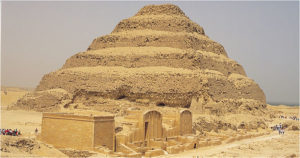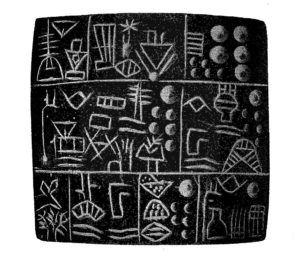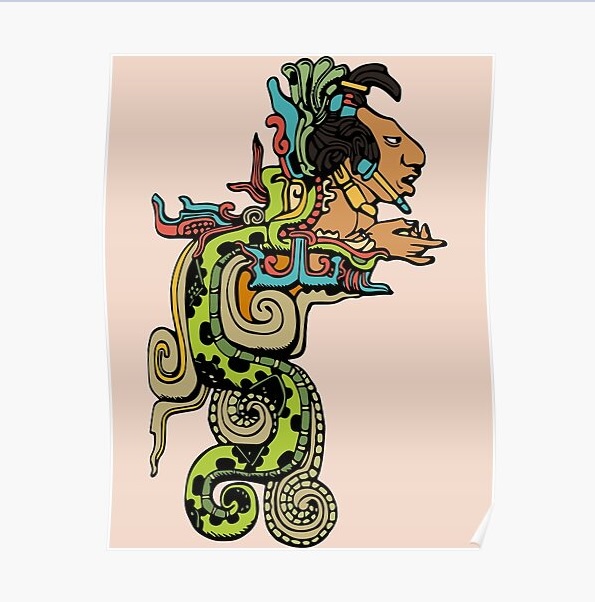
Kukulkan is the Mayan Yucatec god that is known as the “feathered serpent”. The meaning of Kukulkan is Kukul (feathered) Kan (serpent). In the Yucatec language of the Yucatan (Belize, Guatemala, Mexico) the word ‘kuk’ means ‘feather’ while the word ‘kukul’ means ‘feathered’. In the Akan book (section 4) there is mention of the Kan as well as the Aku. The word ‘Aku’ is associated with birds as well as with bird tribes, while the word ‘Kan’ is associated with the Sirian-Reptilians.
Among the Akan and Mande peoples of West Africa the root word ‘ku’ is associated with birds. For the Akan in particular many totem birds have this root as part of their names, e.g. Ako (Parrot), Akoroma (Falcon/Hawk), Akoropon (Eagle), Akonkran (Crow), Akoko (chicken), Vulture ( kokosakyi ) etc. In each of the names for these birds, the root word ko / ku refers to the bird while the rest of the word is descriptive, giving some indication as to what type of bird it is. For instance the Eagle is called Akoropon which means great bird: Ako (bird) pon (great), while the Falcon is called Akoroma , which means Ako (bird), ma(child), that is, a bird that is lesser than an eagle for instance.
The being that was known as Kukulkan to the Yucatec Maya is an accurate description of a member of the Reptilian-Avian faction of the Sirian-Reptilians. The particular faction is the Enki-Horus-Thoth faction that was active in central and southern America (Aztec/Toltec, Inca, Maya) as well as in Early-dynastic Egypt, especially in Lower Egypt, areas like Memphis and Saqqara . This is why Kukulkan was also called the ‘feathered serpent’ or the ‘feathered snake’. There are other Sirian-Reptilian factions such as those represented by Anubis, Set etc.
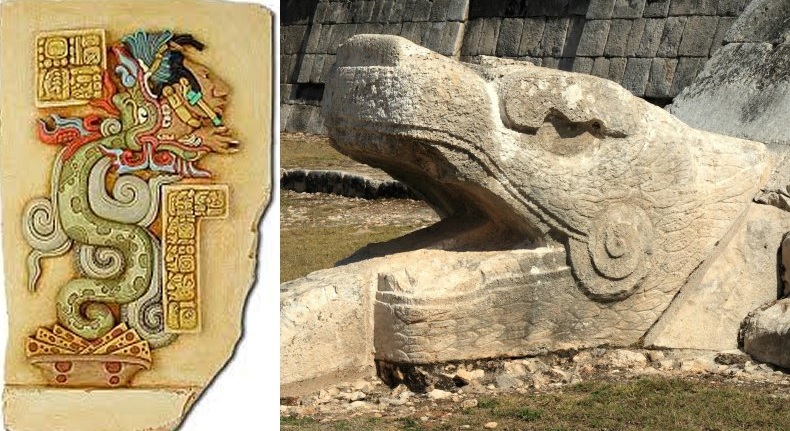
Using the form of language analysis employed in the Akan book, we can understand the name/word Kukulkan as Kuku (bird) Kan ( Sirian-Reptilian). The cult of Kukulkan was/is centered in the Itza (TT-SSA) state of the northern Yucatan. In the Yucatec language, the word ‘itz’ stands for ‘magic’. The amazing fact about the name ‘Kukulkan’ is that the meaning of the name of this being in the Yucatec Mayan language fits perfectly with the meanings of the root words ‘Ku’ and ‘Kan’ found in some African and some other Native Indian cultures. This is because the meanings for these root words are primarily from an extraterrestrial language, the language of the Sirian-Reptilians. Earth cultures who were influenced by the Sirian-Reptilians sometimes have traces of the ET language still in use in those cultures.
Robert Morning Sky has in the past shown the links between the Hopi language and the Sumerian (Sirian-Reptilian) language in his article Parallels between the Hopi and the Sumerian Cultures.
Kukulkan referred to a god as well as to an individual man so conventional scholars sometimes think that this reference is confusing. It is not so, if one considers that these Sirian-Reptilians created bloodlines that became the ruling class in areas such as Ancient Egypt and in the Yucatan. So Kukulkan referred to a Sirian-Reptilian being but also to a title associated with a ruling bloodline formed to rule in the place of this Sirian-Reptilian god (when dealing with the subject of the Sirian-Reptilians, it helps to have in mind the Guauld of Stargate SG 1 fame).
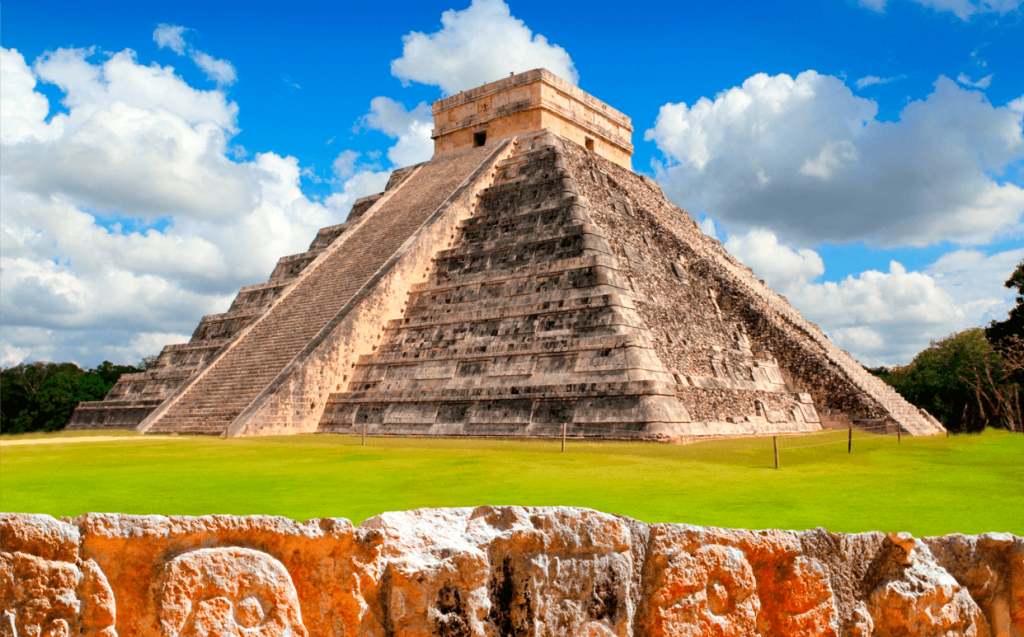
Similar to the Maya and to the Toltec/Aztec of the Yucatan, in Ancient Egypt there were pyramids, including those that were step pyramids. The polymath Imhotep has been associated with building the step pyramid at Saqqara (SSA-KHAA-RRA). He was a priest of the Memphite current, under the Pharaoh Djoser (the Akan equivalent is Osei), the second Pharaoh of the third dynasty, who was a member of an Ancient Egyptian ruling bloodline and similar to the Kukulkan title holders of the Yucatan, he was also one of the ‘children of the gods’, i.e., a direct descendant of ETs such as Ptah/Enki.
Back to Imhotep. He too was called a ‘son of Ptah’ (i.e., he was of the Enki-Horus faction), although of a different bloodline than Djoser. The people and the followers of Ptah were active in Memphis. Throughout Ancient (Early-dynastic) times Memphis was associated with learning. Greeks and travelers from Mesopotamia and the East came to learn at Ptah (Enki ‘s) city. Ptah, also known as Ptah-Neter-Hetep , was known as the Elf-god. He was an ET. The Egyptian word ‘ hetep ‘ is really the same as ‘ hotep ‘ and is a reference to ‘peace’, as in, a greeting. The root word ‘im’, also the variant ‘in’, (as in the Akan name ‘Ntim’), refers to refers to a scribe or to a learned person. Neter or Neteru (‘Naturu’ in the movie Stargate ) and is a reference to the gods (i.e. ETs). Another Egyptian sage associated with this priesthood for which Imhotep was a member was Ptah-Hotep.
Which brings us to another point. It should perhaps come as no surprise that the Sirian-Reptilians were active in the Yucatan. The Yucatan bears strong similarities with some aspects of Egyptian (read Sirian) culture. Both Egyptian and Yucatan cultures use pyramid-like structures (pyramids are also found in Mesopotamia as Ziggurats and also there are pyramids in parts of China and Korea). The pyramid itself is an ancient archetypical symbol representing the fire element, that was originally used (and is still used) by the Sirian-guardian beings (the feline entities). It was later adopted by the Sirian-Reptilians and other galactic beings whose heritage (in remote times) includes influences from these feline guardian beings. This is why pyramids are seen all over Earth where Sirian-Reptilians have been active. The pyramid is primarily a Sirian symbol. (Another interesting connection to the guardian beings is the existence of stargate technology used by some ET races to travel between locations in space-time. The original knowledge regarding dimensional portal mechanics came from the guardian beings. The knowledge was then used to create the stargate technology). The Egyptian as well as the Maya/Toltec cultures are known to have extensively used pictorial glyphs in their writing systems.
Kukulkan is mentioned in the movie Apocalypto directed by Mel Gibson. This was an interesting movie to me, for a number of reasons. (Spoiler Alert!) – At the beginning of the movie we see Native Indians living in the forest. Later on there is an invasion of this idyllic setting by other Indians. The captives are then sent into a Yucatan city replete with step pyramids. The captured Indians are quickly batched together to be sacrificed to the god of the city, Kukulkan . As the Indians are herded up the pyramid to get to the top, viewers are shown images of wall paintings that link the Indians of the pyramid dwellings to their god Kukulkan. It amazed me that at this point the native Indians to be offered as a sacrifice get completely painted blue! This is a minor revelation. On Earth, the blue and red races have their roots in the Sirius and Pleiades star systems.
Related blog post


